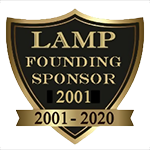eMoviePoster.com
Auction History Result 1a387 HAROLD LLOYD/ERNST LUBITSCH/MARY PICKFORD 7x9 news photo 1936 at party given by Gene Raymond! Date Sold 10/14/2018Sold For: Login or Register to see sold price. An Original Vintage 7" x 9" [18 x 23 cm] News Photo (Learn More) Harold Lloyd was born in Burchard, Nebraska, USA in 1893. His parents divorced when he was small (odd at that time) and he lived with his father (more odd). In 1912, they moved to California, and Harold, who had acted in community theater got a job at the Thomas Edison studio. He met fellow actor (and sometime director) Hal Roach, and when Roach got an inheritance and was able to buy part of a studio in 1913, Lloyd went with him. The following year he met Bebe Daniels, and the two became a team, both onscreen and off. In 1915, Lloyd created the Lonesome Luke character (essentially a rip-off of Chaplin's Tramp character) and between 1915 and 1917 made over 60 one-reel shorts. In 1918, Lloyd created a new character, with trademark horn rimmed glasses (Roach would later take credit for creating the character!). In 1919, Lloyd was injured performing one of his many dangerous stunts when a prop bomb exploded, and he lost his right thumb and forefinger (he would wear prosthetic fingers the rest of his life). Also in 1919, Daniels and Lloyd split up romantically and professionally, although they remained good friends the rest of their lives. In 1921, Lloyd made his feature movie, A Sailor-Made Man, followed by Grandma's Boy, and both were huge hits. Lloyd soon split from Roach and started producing his own movies, distributing them through Paramount, and he made a fortune from them. Lloyd had many hits through the 1920s (he made more movies than Chaplin or Keaton, and they grossed more money overall). He had married in 1923, and had two children, and he used some of the vast amount of money he made to build his own studio and an immense estate, called Greenacres, with 44 rooms, 26 bathrooms, 12 fountains, 12 gardens, and a nine hole golf course. Lloyd had always been eccentric, and his huge wealth allowed him to explore many odd hobbies, including stereopticon-like three-dimensional slides, and he had hundreds of thousands of them made, many of pretty naked (and near-naked) young women! When sound came to movies, Lloyd had trouble adapting, and each of his sound movies were less and less successful, until he pretty much retired in 1938. He spent much of his time on his charity work, and on his odd hobbies. He made the unfortunate move of not allowing his movies to be distributed or shown on TV for many years, which (like Will Rogers) helped to largely cause him to be forgotten by later generations. Worse yet, a nitrate fire in Lloyd's vault caused most of his early movies to become permanently "lost". When Lloyd passed away in 1971, he was one of the richest men in Hollywood, but he was largely forgotten except by film buffs. But in recent years, he has been "re-discovered" and it is generally accepted that Lloyd was one of the three giants of silent comedy, fully the equal of Chaplin and Keaton! His best movies hold up exceedingly well, and I highly recommend seeking them out AND Ernst Lubitsch was born in Berlin, Germany in 1892, to Russian/Jewish immigrants, and he was expected to become a tailor like his father. If he had done so, the movies would have been robbed of one of its greatest directors ever, and his sophisticated romantic comedies were so distinctive (and wonderful) that they were described as having "the Lubitsch touch"! But when Lubitsch first decided to not be a tailor, in 1911, it was to become a stage actor. A year later he made his first movie, and he was in 23 of them between 1914 and 1916 alone! But in 1914, he had also begun to direct (often directing himself), and in 1920, after having appeared in 36 movies, and directing 38, he decided to quit acting and concentrate on directing. His first big successes were historical melodramas, Madame Du Barry, Anna Boleyn, and Carmen. American star Mary Pickford saw his work and hired him to direct her in the U.S. in Rosita. They clashed during the filming, but he stayed in the U.S. and he signed a deal to make six pictures for Warner Bros, and he was given "final cut" privileges, something rarely ever given, and cherished by directors! It was here that Lubitsch first made his first trademark sophisticated romantic comedies. But those films were not big successes, and Warners sold his contract to MGM. This was the time of the beginning of sound movies, and Lubitsh added both sound and music to his comedies, with great success. In 1932, he directed Trouble in Paradise for Paramount, and it was written by Samson Raphaelson, and starred Herbert Marshall, Kay Francis, and Miriam Hopkins. Many people, myself included, consider this the best romantic comedy ever made, and if you have never seen it, I envy you the joy you will have once you do! In 1935, Paramount was so taken with Lubitsch (and his success) that he became head of the studio, the only director ever to both head a major studio and still direct movies. But he could not do both, and he was fired after a year. In 1939, Lubitsch signed a contract with MGM and made Ninotchka (a comedy with the ultra-serious actress Greta Garbo, promoted as "Garbo Laughs") and The Shop Around the Corner, which again paired Lubitsch with writer Samson Raphaelson. The movie is set in Budapest, and it has two co-workers who bicker by day and write love letters to each other by night, and it is a marvelous movie that also simply must be seen (and please try to see it before seeing either of the re-makes, In the Good Old Summertime, or You've Got Mail). In his later life, Lubitsch was in poor health and he suffered a series of heart attacks, and one in 1947 proved fatal. The story (perhaps apocryphal) goes that when legendary director Billy Wilder left his funeral he said, "No more Lubitsch" to which equally legendary director William Wyler replied, "Worse than that. No more Lubitsch pictures."! Some of his other movies include: Love Parade (nominated for the Best Director Academy Award for this film), The Patriot (nominated for the Best Director Academy Award for this film), and The Merry Widow AND Mary Pickford was a Canadian actress from the 1900s to the 1930s. She was one of the top silent actresses, who specialized in playing young girl roles as an adult, and she was called "America's Sweetheart", and when she married Douglas Fairbanks, Sr., the country rejoiced (and the country mourned when they divorced!). Some of her movies include: Little Annie Rooney, Sparrows, My Best Girl, Coquette (winner of the Best Actress Academy Award for this film), and Tess of the Storm Country Important Added Info: Note that this news photo measures 7" x 9" [18 x 23 cm]. Condition: good. The news photo is lightly rippled throughout (caused by the snipe glued to the back), with some creases across the top. Learn More about condition grades 

Postal Mailing Address:
Bruce Hershenson, P.O. Box 874, West Plains, MO 65775. (For our UPS or FedEx address, click here) phone: +1 417 256-9616 fax: +1 417 257-6948 E-mail: Contact Us Hours of Operation: Monday - Friday 8:30 AM - 12:00 PM & 1:00 PM - 5:00 PM (CST) |
|||||||||||||







